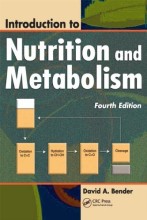Micronutrients: Minerals
11 important questions on Micronutrients: Minerals
Risk factors for marginal nutrition/deficiencies and its corresponding sport:
What are the different shapes of iron in the body?
- Erythrocytes
- plasma
- body stores (liver/spleen)
- myoglobin and spiratory enzymes (mitochon
dria)
What are the stages of iron deficiency? And are deficiencies in iron common?
- Early stage: ferritin decreases
- intermediate stage: transferrin decreases
- late stage: haemoglobin decreases, altered RBC volume parameters
common?
- not different to general population
- female athletes, endurance athletes
- depletion iron stores
- female and adolescent athletes (reduced stores)
- male lower risk > 16% female; 4% male
- iron deficiency anemia
- quite low - not different for athletes
- adolescent girls, young men
- Higher grades + faster learning
- Never study anything twice
- 100% sure, 100% understanding
Iron - effects on performance/symptoms deficiency:
- oxygen transport
- oxidative enzymes and respiratory chain proteins
- erythropoiesis, thyroid hormone, neural and immune function
- excess: free oxygen radicals
symptoms deficiency:
- weakness, breathlessness, impaired aerobic capacity
- non-specific symptoms
- may also be indicative of over-training, immune deficiency, psycosocial stress
Effect on aerobic capacity/performance:
- iron depletion: no effect on aerobic capacity (VO2max)
- iron deficiency, no anemia: probably effect
- iron deficiency, anemia: clear impairment
Causes of iron deficiencies in exercise are:
- Training (strenous endurance exercise)
- Growth and pregnancy
- Infection/inflammation (hepcidin)
- Other medical / physiological reasons
- Inadequate intake (vegetarians)
- Low dietary iron availability
- enhancers (Vit C, fermented food)
- inhibitors (phytate, polyphenols, calcium)
Iron intake recommendations for athletes:
- No specific recommendations
- iron-loss in endurance runners: ~1.6 mg/day(men) and ~2.2 mg/day(women) (0.8-0.9 non athletes)
- intake ~ 20 mg/day (10% absorption)
- EAR 1.3-1.7 times higher for athletes: 1.8 times higher for vegetarians
- female vegetarian athletes: 3 times higher
- foods rich in heme iron 4/week
- iron-fortified foods
- nonheme iron food sources
- combine nonheme iron foods with meat or foods rich in vit C
- avoid drinking tea/coffee/milk at meals
Calcium:
exercise and bone health?
- Present in bones
- bone health:
- osteoporosis, osteopenia (especially in women that exercise a lot)
- Bone Mineral Density (BMD) is decreased
> exercise and bone health:
- active lifestyle: greater bone mass
- type of exercise:
- weight bearing vs non weight bearing
- site specific
- paradox: athletic premenopausal women
- femal athlete triad = combi of disorder eating, osteoporosis and amenorrhoea
How is the calcium status in athletes?
- Calcium excretion may be increased during exercise (via sweat and urine)
- protein, sodium, alcohol, caffein
- reduced intake:
- young femal athletes
- weight-classes
- vegans
- vitamin D is needed as well!!
Calcium intake recommendations for athletes:
especially when on energy-restricted diet:
- Adults men and women: 1000 mg/day
- children and elderly: 1300 mg/day
- postmenopausal women: 1500 mg/day
- amenorrhoeic athletes (due to low estrogen): 1500 mg/day
When on energy-restricted diet:
- include three servings per day low-fat dairy
- include these dairy foods in high CHO meals
- eat fish with bones
- include Ca-enriched soy products
- eat leafy green vegetables
Symptoms of magnesium deficiency:
- Muscle spasms
- CVD
- osteoporosis
- caused by poor intake, disturbed digestion r excessive excretion (kidney disease)
Magnesium intake recommendations for athletes:
- No specific recommendations for exercise: 300-350 mg/day
- good dietary sources: leafy vegetables, nuts, grain
- supplements: make sure not to exceed safe upper level!
- GI complications e.g. cramps, diarrhea
The question on the page originate from the summary of the following study material:
- A unique study and practice tool
- Never study anything twice again
- Get the grades you hope for
- 100% sure, 100% understanding





























